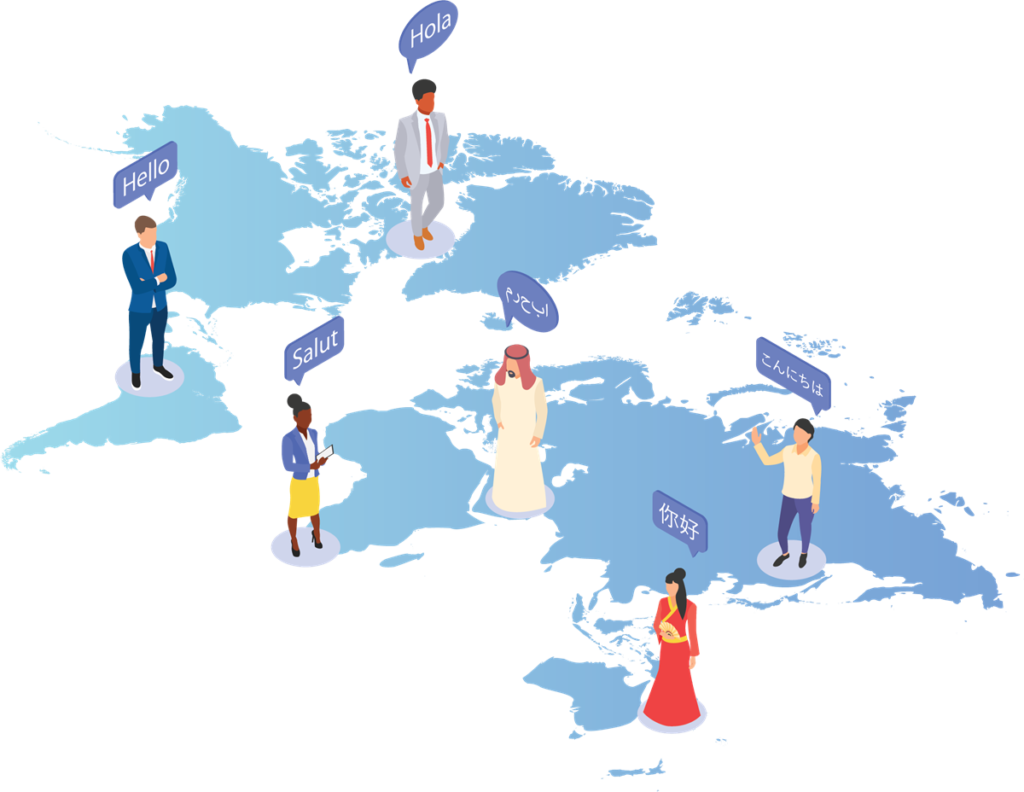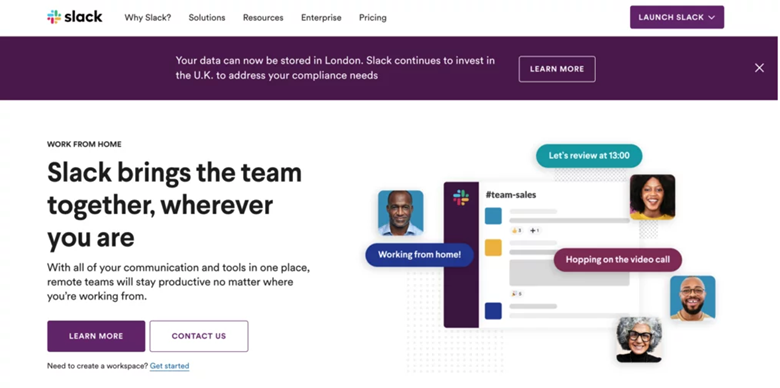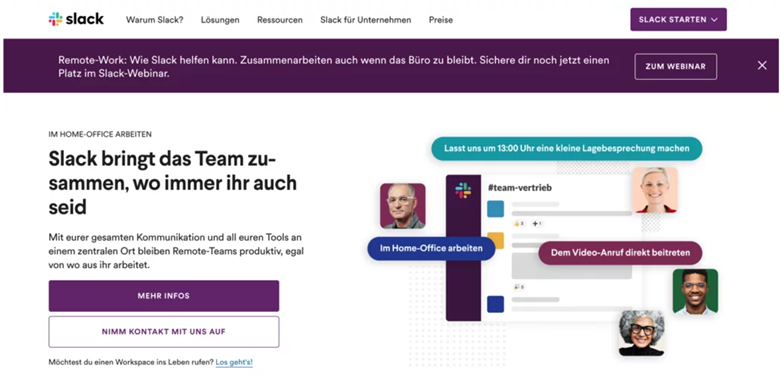
Localization means adapting a product or service for a specific language, culture, or target audience. By ensuring cultural relevance and clear communication in local languages, the product complies with regional regulations and enhances user experience. Localization helps businesses reach more people, keep customers happy, and stand out from competitors. In this article, we will give the localization definition and explain how to implement a step-by-step localization strategy.
What Is Localization?
Although translation and localization have a lot in common, they have different goals: Translation preserves the meaning, while localization focuses on user convenience.
So, what is localization? It is not just translation in a linguistic sense. In addition to text, it adapts the user interface, audiovisual content, and regional settings like date, time, money, units, symbols, and icons.
There are different types of localization depending on its purpose:
- User interface localization: Adjusting the interface’s visuals and text to match the audience’s language and culture. It includes translating buttons, menus, dialog boxes, instructions, and other on-screen elements to ensure clear and intuitive communication. The goal is to make the product easy to understand and use in different regions.
- Content localization: Adapting text and multimedia to resonate with the local audience. It involves translating website content, product descriptions, videos, and images to convey the intended message in a culturally appropriate manner. Content localization enhances the relevance and accessibility of information for users in the target market.
- Marketing localization: Crafting marketing materials and campaigns that resonate with the cultural, linguistic, and social norms of a specific audience. It means tailoring ads, slogans, and promotional content to connect with local consumers and do well in diverse markets.
- Video game localization: Transforming video games to appeal to players with diverse backgrounds. It encompasses modifications in graphics, audio, and cultural references to make the game experience immersive and meaningful for players from different cultures.
- Technical localization: Adjusting the product or service so it works well in a specific region or environment. This may involve modifying character encoding schemes, adapting date and time formats, aligning with local standards, and ensuring compatibility with local hardware or software. Technical localization makes sure the product works well and fits the target market’s technical needs.
The Importance of Localization in Business
For businesses, localization is the key to the international market. As we mentioned in our previous post, consumers are more likely to buy products if they are addressed in their languages. CSA asked 9,000 online shoppers in 29 countries if they buy a product when it speaks to them in their language. 40% said yes. It means that English-language apps have a low chance of success in foreign markets, despite English being widely spoken internationally.
More reasons to localize your app are as follows:
- Increased number of downloads in stores. People are more likely to download and engage with an app if it matches their language and culture. By optimizing your app for different languages and regions, you enhance its visibility in search results and increase the chances of being featured.
- Increased revenue and ROI. A localized app can significantly boost revenue by appealing to a wider audience. Users are more likely to make in-app purchases or subscribe to premium features when they feel a strong connection with the app and its content. Investing in localization can lead to a big return on investment (ROI) as the app becomes popular in different markets.
- Competitive advantage. In a competitive app market, standing out is crucial. When you localize your app, you have an advantage over developers who don’t adapt their apps to specific regions. Users are more likely to choose an app that feels familiar and resonates with their cultural background. When you understand and meet the needs of different people, your app becomes more attractive and trustworthy.
Localization Success Stories
Here are several success stories of businesses that have excelled in global markets due to localization efforts.
Nike
Nike has efficiently localized its marketing campaigns, product offerings, and online presence to resonate with diverse cultures worldwide. The company invests in understanding local sports cultures, fashion trends, and consumer behaviors to tailor campaigns and products to each region. Nike’s commitment to localization has strengthened its connection with consumers in various countries and helped it become a leader in sportswear worldwide.
Tinder
The Tinder dating app is another example of a company that has excelled globally through effective localization. Tinder understands that dating varies from culture to culture, so they adjusted their platform to cater to different regions. Thanks to this approach, Tinder has established a strong presence in markets around the world, with localized features and marketing strategies that resonate with local audiences.
Toyota
Toyota, a Japanese automotive manufacturer, has done well in global markets by adapting its vehicle models to the preferences and requirements of different regions. The company conducts research to learn about how people drive, what road conditions are in their regions, and what consumers like. Toyota’s approach allows the company to offer a variety of vehicles appealing to customers in various countries.
Coca-Cola
Coca-Cola is a classic example of a brand that has successfully localized its marketing to reach diverse audiences. The beverage giant tailors its advertising campaigns, packaging, and even product formulations to match different cultures in other countries. Coca-Cola is popular around the world because it can maintain a global brand identity while adapting to local tastes.
7 Steps to Create and Implement a Localization Strategy
To efficiently enter foreign markets, choose localization approaches that meet the specific needs and expectations of each region. This creates huge growth opportunities that you could never achieve in just one market.
Localizing content takes time, effort, and company resources because it’s a complex process. However, each step is extremely important for the successful launch of the product or service in global markets and connection with local users.
Step 1: Adapt the Product Before Localization
Even if you don’t plan to localize your product in the near future, we recommend optimizing it for localization from the very beginning. Better to be prepared beforehand than redesign the product if you decide to localize it later.
Your main task is to make sure that the app looks and works correctly in any language. Design optimization is crucial for the flexible layout of text and interface elements. It considers changes in text length for different languages.
It’s okay if the name of a button or menu item is shorter in the localized version. But what if it’s longer and doesn’t fit completely? A short word in English, like “Get”, can become 10 times longer in other languages. Therefore, make sure that the app buttons and other elements can also “grow” with the text. For example, here’s how Slack optimized its web interface to transition smoothly between English and German translations:


Step 2: Use Plain English
Tell your content and UX writers to use clear, brief, and easy-to-understand English and avoid using complicated language. Additionally, the writers should not be ambiguous. For instance, they should not use “once” to mean “after”. For more information, refer them to guides like Federal Plain Language Guidelines.
If the writers know another language, they should try translating their texts into it with the help of machine translation. If the translation does not make sense, then it’s better to rephrase the original text.
Step 3: Prepare Files for Localization
When preparing files for localization, organize the content systematically. Here are some tips that will help you simplify the preparation process:
- Prepare the files at the development stage. Keep text and images separate from the code. Do not include text in images that will need to be translated later.
- Create a dedicated file for strings containing numeric specifiers. This helps translators understand and replace placeholders with accurate content for each language.
- Write instructions for translators regarding some files and context. Provide screenshots, if possible. Misunderstood context can worsen the quality of localization.
- Do not break phrasal verbs, such as look for, pick up, or run into, as this will confuse translators.
Step 4: Test the Translation in a Familiar Language
Does your product sound well in another language? Before you start translating your product or service into different languages, first test it in a language you know well. Choosing a language the team knows well helps find and fix errors more easily. This test serves as a quality assurance step. Developers can fix linguistic, contextual, or formatting issues before translating into multiple languages.
Step 5: Translate the Product Into Other Languages
To complete this step, you need skilled linguists. They should speak the target languages well and understand the cultures of each locale. They should also have experience in localizing software products. Translators who only work with texts like fiction books and don’t know the details of software localization may not deliver high-quality translations.
The translators and development team should work together to make sure that the translations accurately convey the original meaning. Consistency in words, style, and tone is vital across all languages for a smooth user experience worldwide. To make sure that the translations are accurate, translators and the development team need to communicate regularly.
Step 6: Proofread the Translations
After the translation, conduct thorough proofreading to refine and polish the localized content. Professional proofreaders carefully review the translated material, checking for grammatical errors, syntax issues, and inconsistencies. This step makes sure that the language is accurate and maintains high quality across all versions.
Proofreaders also focus on cultural nuances and context-specific references to make sure that the translated content resonates with the audience. For example, the phrase “Black Friday” meaning discounts at the end of November sounds like “White Friday” in some languages.
Step 7: Test and Correct Errors
Rigorous testing is a fundamental aspect of localization workflow. This phase involves thoroughly searching for errors, inconsistencies, and bugs that may have emerged during the translation.
Testers meticulously review the localized content, making sure that it matches the original meaning and context. To create a top-notch product in many languages, it’s important to address the language, culture, and technical issues. This iterative testing and correction cycle significantly contributes to the overall success of localization.
Conclusion
Localization is more than just translating. It also means adapting products and services for different languages, cultures, and audiences. Localization is a must for businesses to thrive and stay relevant in the global digital market, and here’s why:
- It is the key to the international market.
- It increases the number of downloads in the App Store and Google Play.
- It increases revenue and ROI.
- It gives your product a competitive advantage.

